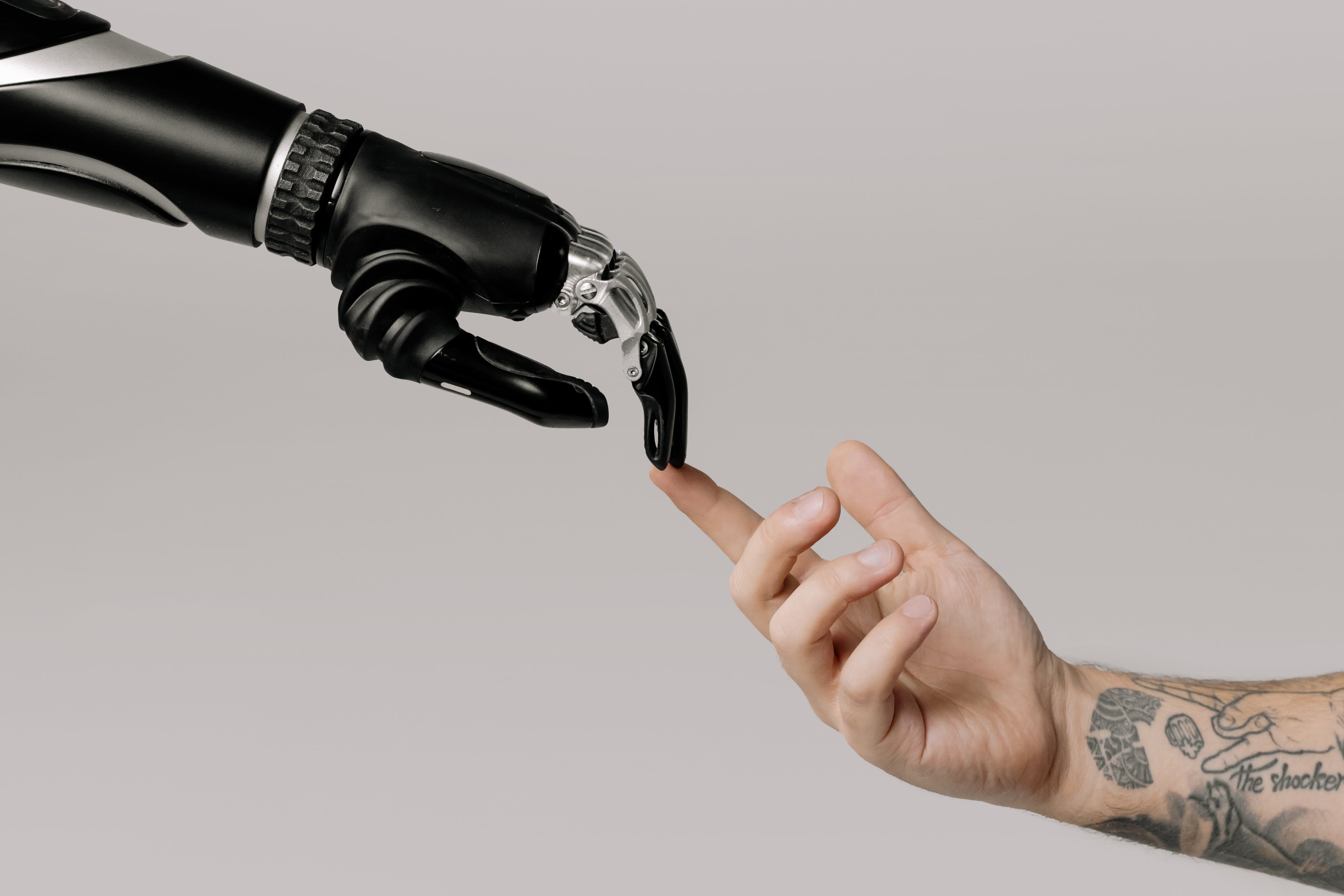What prompts the frequent discussion about AI and ML in healthcare? A staggering 93% of active professionals in the Digital Health sector contend that machine learning processes hold the potential to reveal elusive or inaccessible values within the healthcare domain.
Two critical factors contribute to this discourse:
1. The opportunity to save numerous lives swiftly and more efficiently.
2. Significant investments in the industry: In the latest YCombinator batch, 35% of startups are dedicated to AI ventures.
Now, the question arises: why is this the case?
Let’s begin with Benefits of Artificial Intelligence in healthcare apps
1. Speed in diagnosis and treatment: firstly, AI and ML in healthcare can analyze vast volumes of medical data to identify patterns and provide more accurate diagnoses (i.e., improve patient outcomes).
This analysis is significantly faster than manual work, thus increasing throughput and enabling assistance to a larger number of individuals.
Moreover, it is relevant even at the pre-diagnostic stage, aiding in sorting patients and having AI-generated symptoms and assumptions in advance:
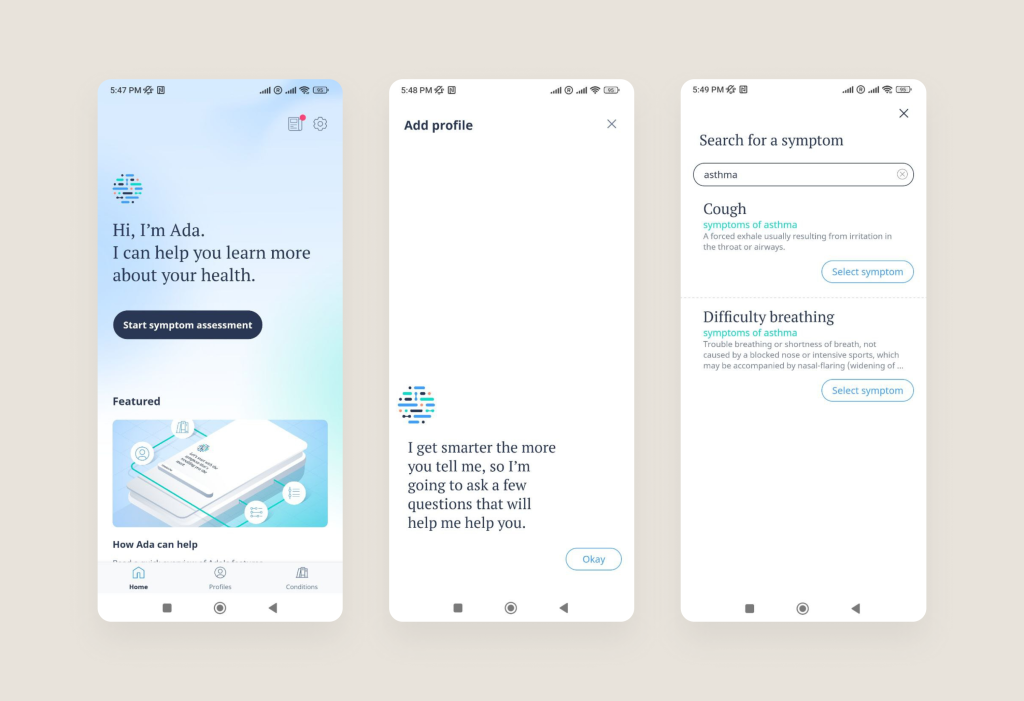
Source: Ada
2. Personalized medicine: secondly, these algorithms can also be used to develop more personalized and effective treatment plans or fitness programs. This significantly enhances user engagement.
Typically, for such personalization, AI companions are additionally employed, responding to any questions at any time.
AI treatment or rehabilitation plans are statistically more effective: by analyzing the outcomes of other patients with similar patterns and issues, they can tailor programs accordingly. For instance, we developed an AI-powered application for Sensae that precisely analyzes the user’s current condition and provides recommendations for further actions.
Here AI not only collects data based on user responses and completed exercises within the application.
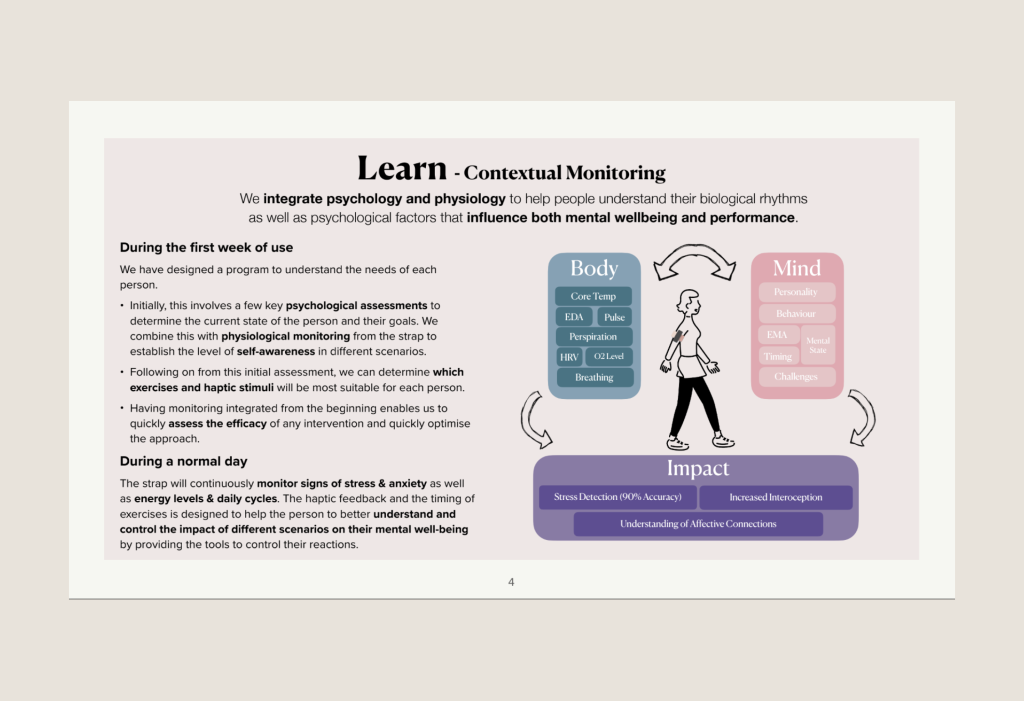
Learn how we’ve built AI health platform for Danish company
3. Operational efficiencies and cost savings: in the first point, we already discussed throughput, but AI and ML in healthcare can also automate many other administrative processes, such as appointment scheduling, electronic medical record management, and processing insurance claims.
This can save time and reduce costs for healthcare startups and clinics, allowing them to focus on improving patient care.
In healthcare, there are specific challenges that can complicate the implementation of AI. Therefore, if you want to supplement your knowledge or keep track of emerging trends, you can explore our selection of 100 resources (books, guides, websites, and influencers) about Product Management, UX, Technology, Healthcare market trends, and Product Marketing.
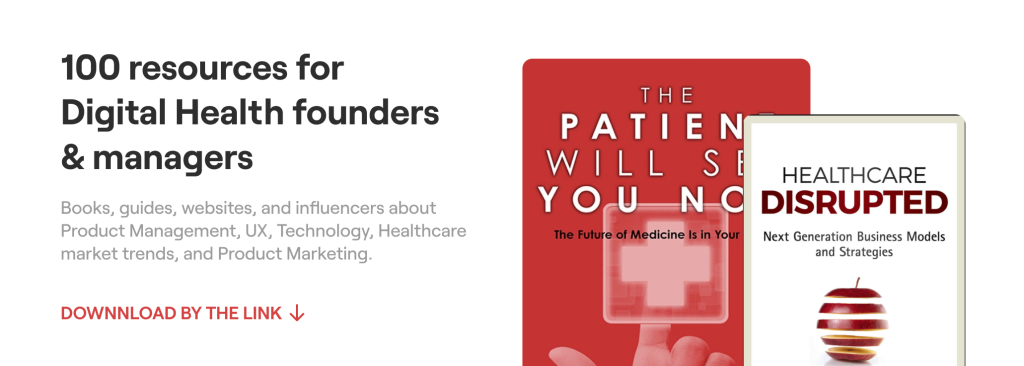
Download List of 100 resources for digital health startup founders & managers
Well, now that we’ve explored the benefits, let’s delve into real-world examples 🙂
Examples of Uses AI & ML in Healthcare Apps
1. Remote monitoring: AI and ML algorithms can be utilized for remote monitoring of patients’ health conditions. This means that doctors don’t need to frequently ask their patients to come in; they can be informed about progress at any time and even intervene promptly before serious complications arise.
We’ve already mentioned Sensae as an example, which utilizes wearable devices that help people manage stress and anxiety by using AI to interface with emotions through personalized haptic biofeedback.
Such devices can gather data on the patient’s heart rate, blood pressure, and other metrics. Then this data goes through AI, and as a result, analytics are generated with an assessment of the user’s current state and recommendations for further actions.
Subsequently, this analytics can be deciphered by doctors during user visits, or users can independently access and review the results:
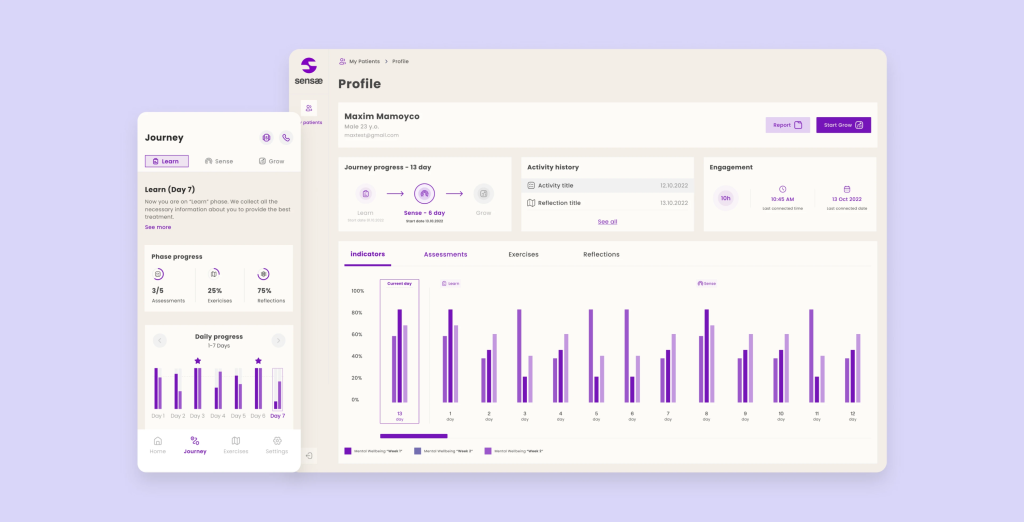
2. Predictive analytics: okay, we know about analyzing vast amounts of data from numerous sources. But what can we do with it beyond diagnosis and treatment recommendations?
We can build linear regressions for predictions 🙂
This way, we can identify patterns in various diseases and their progressions/outcomes, including patient inputs (genetic predispositions, symptoms, and medical history). And thanks to this, determine which treatment will be most effective and what preventive measures are necessary.
3. Medical image analysis: surprisingly, AI is very adept at interpreting photos, X-rays, and tomography.
Take a look at the example below. Even with a regular phone app, AI can recognize a serious issue (or reassure the patient and the doctor if there’s no cause for concern):
In other words, ML algorithms can be used even to detect early signs of cancer, and, of course, in such cases, doctors can intervene very quickly.
4. Chatbots for patient communication: the most common direction that helps not only gather information or provide recommendations but also improve the patient’s emotional state.
This is particularly popular in the Mental Health niche. For example, try talking to Chat GPT-3 about your problems, and you’ll see that it can express sympathy and provide genuine uplifting advice. In our field, there’s a developed mental health application created in collaboration with Microshift, which recently released an AI-coach chat feature.
Their new feature is an AI-coach chat, similar to the story with GPT-3 mentioned earlier but more specialized and integrated into the entire ecosystem of the application.
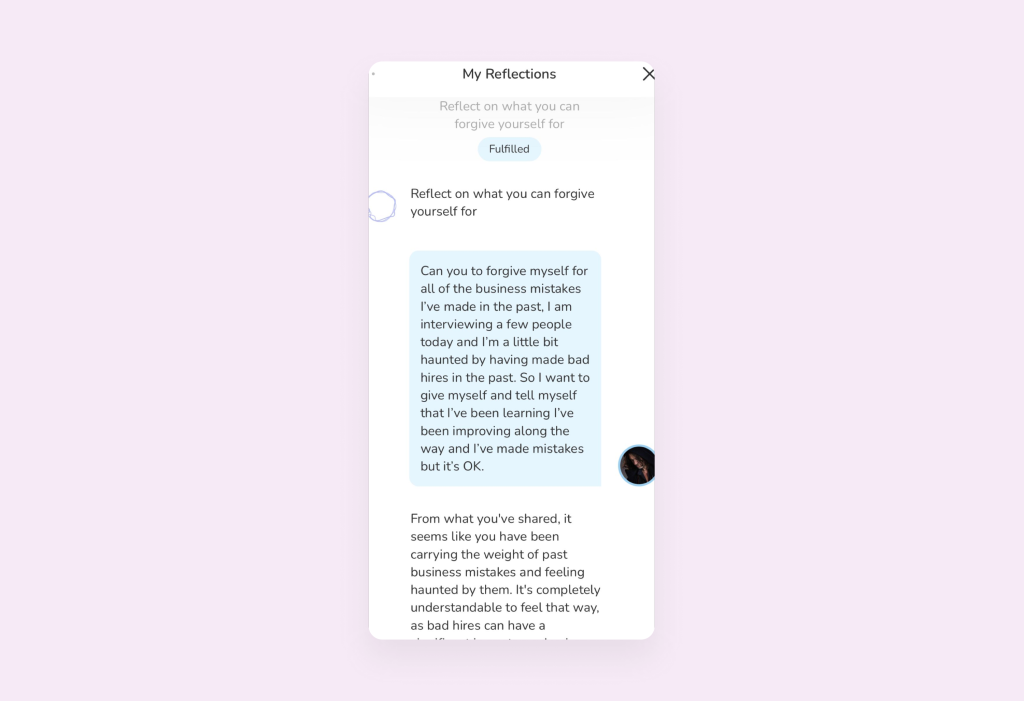
Learn how we’ve built mental health platform for Swedish startup
So, we’ve learned about the advantages and key examples of digital health apps. Now, having chosen a direction, we start the development process.
Steps to Implement AI and ML in Healthcare Apps
1. Define the app’s objectives and goals
Prior to delving into the development of a healthcare app, it is crucial to clearly define and outline the objectives of the application. These objectives may range from optimizing medical diagnosis and offering predictive analytics to enhancing patient care and automating repetitive tasks. Once the goals are established, the selection of suitable AI and ML tools becomes a more straightforward process.
Additionally, after defining the goals, describe the problems and potential solutions:
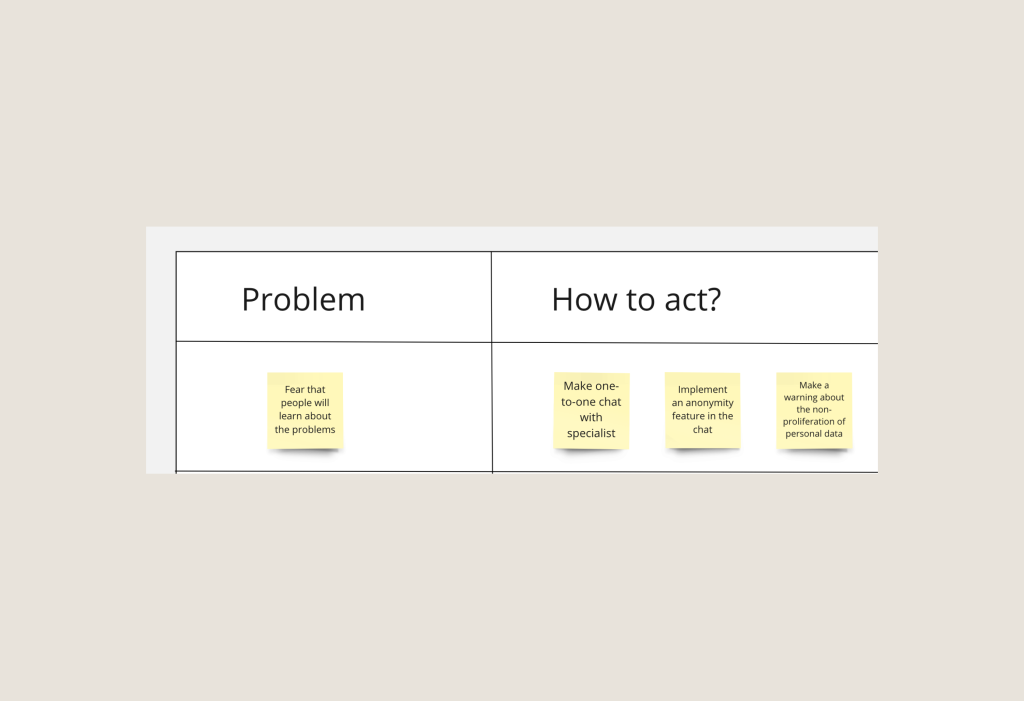
2. Select the suitable AI and ML tools for implementing
2.1 Model selection for AI and ML in healthcare: a plethora of tools, such as ML Kit, Keras, and PyTorch, are available in the market. During the selection process, it is imperative to take into account factors like the app’s objectives, the volume of data, and the computational capabilities required.
2.2 Data gathering and processing: moreover, once you choose the platform, you must take care of data sources (they can be divided into specific and general).
If the company has its own set of data specific to the machine learning task, this is the simplest scenario. However, usually, the available data is insufficient, so it is always necessary to find a way to obtain the necessary data.
It is important that the data is of high quality and relevant; otherwise, you will not be able to use it for AI training.
This may encompass patient records, medical imaging, sensor data, clinical trial results, lab reports, and various other components. Subsequently, the data is consolidated into a Large Language Model (LLM) to initiate the learning process, a unique capability of AI.
2.3 Feature engineering: this is the process of innovating new features or reshaping existing ones to enhance the efficiency of a machine learning model. This entails extracting pertinent details from raw data and converting them into a format that a model can readily comprehend. The objective is to enhance model accuracy by presenting more insightful and applicable information.
2.4 App integration: the extracted models are seamlessly integrated into the app’s backend system. Establishing a robust and accessible pathway is essential for data to reach the models, enabling them to generate analyzed predictions.
The integration can take place through APIs (the connection specifics depend on the instructions of the specific API).
3. Craft and develop the AI app
Our favorite phase 🙂
This is where the creation of sketches and subsequently, prototypes comes into play. To achieve this, we can employ the Crazy 8 method. This involves rapidly sketching eight distinct ideas/components/variants in eight minutes, all of which were previously brainstormed.
The objective is to delve deeper into our idea and unearth additional solutions. It’s conceivable that one idea may challenge or complement another.
Consider the scenario of addressing a user fear issue. We may contemplate implementing an anonymous chat feature with AI, but what if we also aim to gather statistics and data, and anonymity hinders the acquisition of comprehensive data? Moreover, this data is needed for AI and ML.
Especially for artificial intelligence in medical diagnosis.
However, not all data may be indispensable. In our specific mental health context, knowing the class and type of problems might be valuable data, while user names may be deemed unnecessary. Thus, the essential data can still be obtained. The crux lies in discerning what features need implementation in the app to collect pertinent information about students.
Next, we introduce a novel idea, “alleviating fear while needing data,” and brainstorm ideas for interaction and solution components. When the eight minutes elapse, we affix all the sketches on the wall.
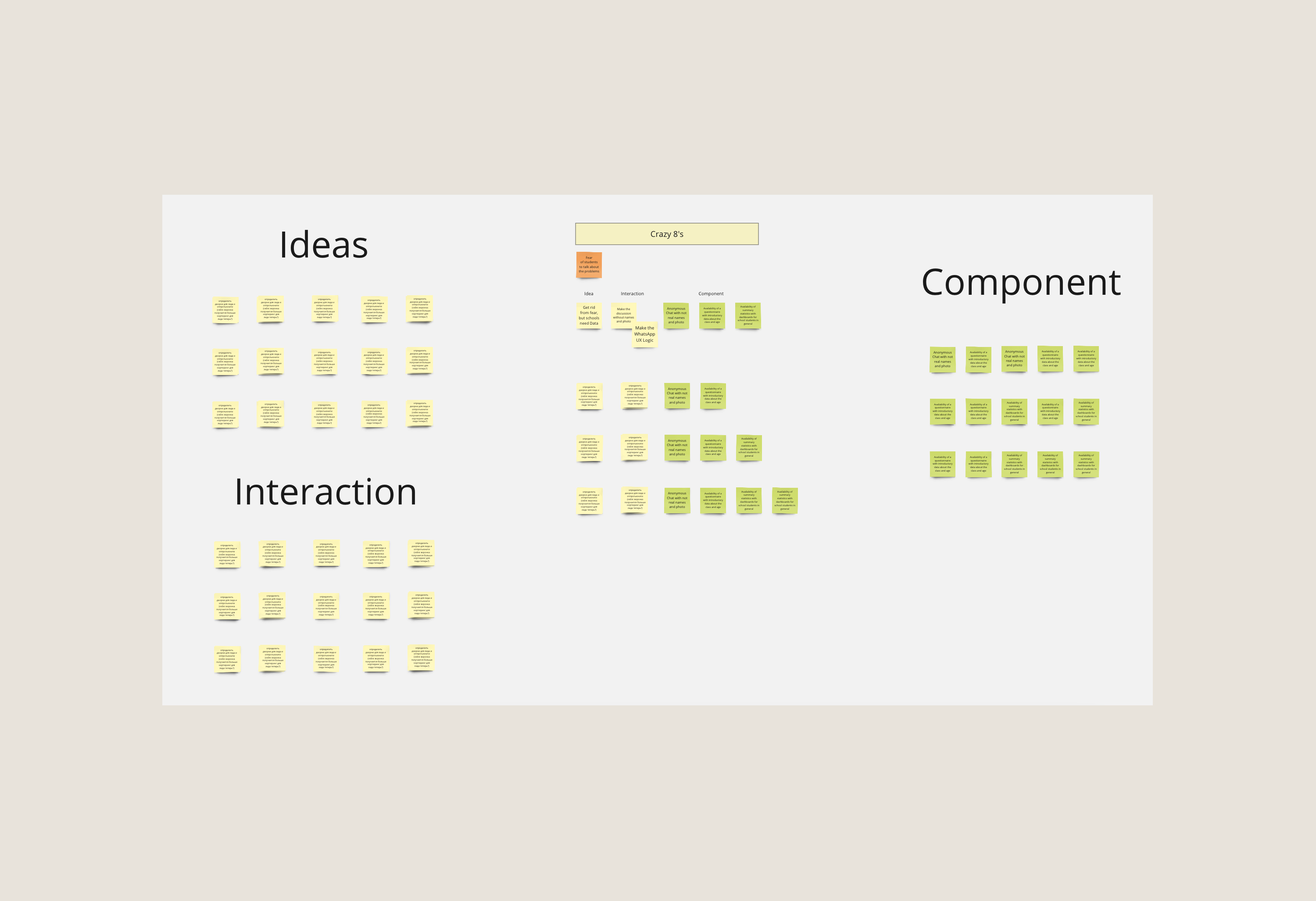
Next, we infuse the concepts with “Interaction” and “Components” to provide a detailed description. For instance, if the idea is “Addressing Anxiety, yet Companies Need Data,” we can introduce the Interaction “Enable anonymous discussions” and incorporate Components related to anonymity and data gathering.
Within the “Interaction” segment, we also consider optimizing user interaction with specialists. In the context of our example, if the app includes chats or video calls, it’s beneficial to align the UX with familiar patterns from popular apps. This ensures users find the feature intuitive, facilitating easy access to the information they seek.
Subsequently, we select ideas (with a more detailed exploration of idea selection and various techniques/templates described here) and compile a list of keywords. These keywords outline the primary attributes that users should perceive concerning appearance and interaction. An example could be “Helpful, simple, and minimalist.”
With all the gathered information, we progress to visual design concepts and moodboards. Moodboards encompass various elements, including keywords, color schemes, typography, and screen examples, each accompanied by a clear description.
At this stage, we possess the necessary components to craft an exceptional customer experience. By integrating UX wireframes, creative direction, and UI design, we develop a prototype, often utilizing tools like Figma.
What should the prototype encompass? Following the best practices of international apps, we construct the entire user journey within the application, addressing previously identified issues and their solutions.
For a detailed guide on UX rules, outlining steps to boost user engagement and minimize user churn, we’ve compiled a comprehensive book, which you can explore through the link provided below.
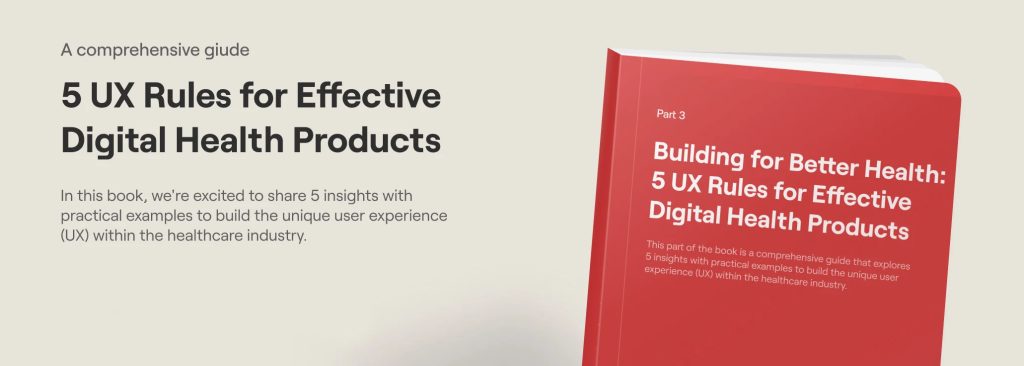
5 UX Rules that improve User Engagement & Retention in Digital Health platforms
4. Thorough testing and deployment of the AI app
We’ve noticed a common trend in our interactions with various companies in the diverse field of Digital Health products: a lack of emphasis on User Tests.
Engaging in user testing across different demographics in healthcare applications provides valuable insights into their experiences, enabling us to tailor solutions to their specific needs. Here’s how to conduct effective User Tests:
4.1 Assemble the target audience:
– Utilize your existing database.
– Explore other platforms frequented by potential users, such as Facebook groups discussing relevant issues, thematic websites, forums, or even communities/blogs of your competitors.
Note: Differentiate tech-savvy users from others to assess the usability for various age groups, ensuring broader inclusivity.
4.2 Develop questions and tasks, focusing on specific actions within the app, for instance, locating a chat AI feature.
4.3 Consider conducting Customer Development (CustDev) concurrently, but delve into resources like “The Mom Test” for a comprehensive understanding. Generally, inquire about past experiences rather than future intentions (‘have you used this?’ instead of ‘will you use this?’).
4.4 Document the test outcomes:
– Assess if users recall the brand’s primary colors post-test.
– Identify any navigation challenges.
– Evaluate the completion of assigned tasks.
– Check the mistakes of AI.
In general, this is literally a compressed version of the development. You can read a more complete version dedicated specifically to product development here.
And here it is necessary to understand that the specificity of AI creates challenges in development, so let’s also consider them.
Challenges of Implementing Artificial Intelligence in healthcare apps
As the number of healthcare applications grows, so does the integration of artificial intelligence and machine learning in medicine.
However, like any technology, there are certain issues and drawbacks that need to be considered. Below, we will explain and analyze the shortcomings and challenges of working with AI and ML in healthcare applications.
1. Data privacy and security: given the volume of confidential information associated with medical diagnosis and treatment, there is a risk of breaches and unauthorized access.
This not only jeopardizes patients’ personal information but also undermines trust between patients and industry professionals. Regulatory acts like HIPAA (Health Insurance Portability and Accountability Act) further increase the complexity of data protection.
How to protect? For this, we have researched all the standards and popular community-driven recommendations for you and briefly outlined a step-by-step algorithm in one of our articles here.
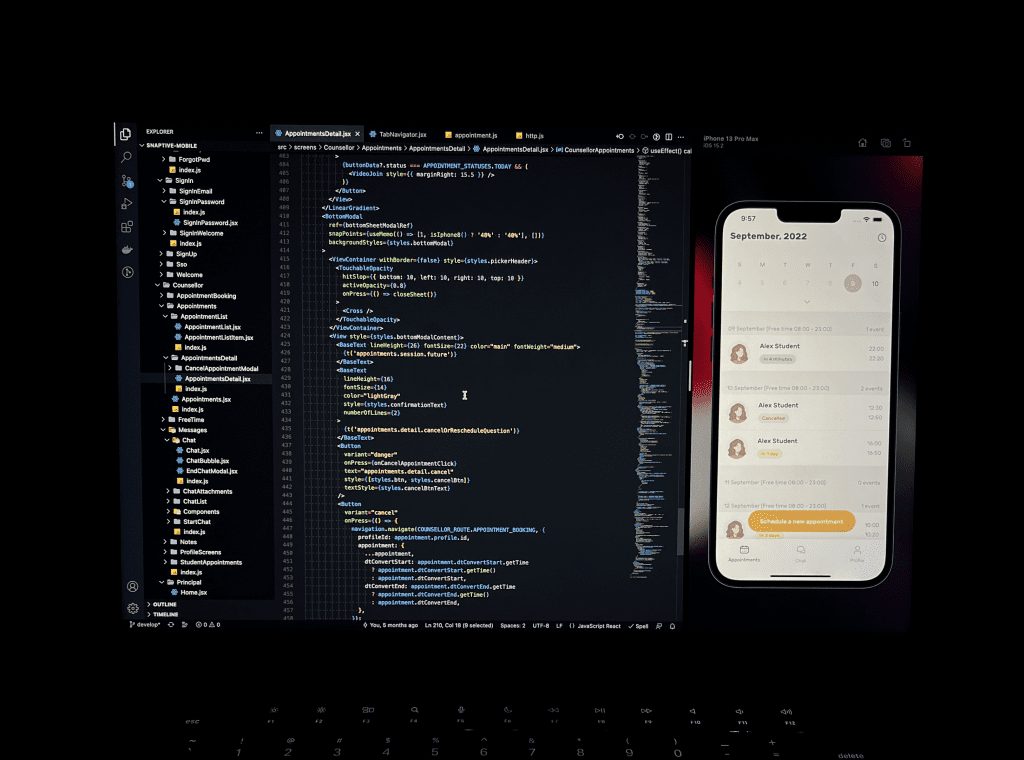
2. Regulatory compliance challenges: another challenge when dealing with AI and ML in healthcare applications is regulatory compliance. It is a heavily regulated industry, and the integration of new technologies requires adherence to various rules.
For instance, the Food and Drug Administration (FDA) has developed specific guidelines for the use of AI and ML in medical devices. Developers must ensure that their applications comply with all relevant rules and guidance.
3. Lack of qualified professionals: a significant problem faced by developers of healthcare applications is the shortage of qualified professionals of artificial intelligence and machine learning in medicine.
Such a field typically doesn’t attract individuals with expertise in technology, and the demand for qualified professionals is growing faster than the supply. As a result, there is a shortage of professionals with the necessary experience to develop and maintain AI and ML solutions in healthcare.
In navigating these challenges, developers and stakeholders in the healthcare industry must address issues related to data security, regulatory compliance, and the scarcity of skilled professionals to ensure the successful integration of Artificial Intelligence in healthcare apps.
And let’s finish with best practices.
Best Practices for Using AI and ML in Healthcare Apps
To ensure the effective integration of AI and ML technologies into healthcare apps, healthcare organizations should adhere to a set of best practices. Here are some key guidelines:
1. Define a clear and targeted use case: identify specific use cases where AI and ML can bring value, such as enhancing diagnosis or predicting disease risk. This targeted approach ensures that efforts are concentrated on areas where the technology can be most impactful.
2. Ensure data quality and accessibility: the accuracy of AI and ML algorithms relies on high-quality data. Healthcare organizations must guarantee the quality and accessibility of data to enable algorithms to generate reliable results.
3. Ensure transparency and explainability of algorithms: foster transparency and explainability in the AI and ML algorithms employed in healthcare apps. This builds trust among patients and healthcare providers, ensuring ethical use of the technology.
4. Collaborate with healthcare professionals and patients: develop AI and ML technologies collaboratively with healthcare professionals and patients. This collaborative approach aligns the technology with the needs of both patients and healthcare providers, promoting ethical and effective utilization.
So such best practices underscore the significance of meticulous planning and cooperation during the implementation of AI and ML technologies in healthcare apps. Adhering to guidelines enables healthcare organizations to leverage these technologies effectively, leading to improved patient outcomes and advancements in the healthcare sector.
Okay, what’s about Future of AI & ML in Healthcare Apps?
As artificial intelligence and machine learning in healthcare continue to evolve and advance, the future of healthcare applications appears promising.
1. Potential for further AI and ML integration in healthcare: with healthcare organizations continuing to incorporate AI and ML technologies into their healthcare applications, we can anticipate further improvements in diagnosis, treatment, and more personalized care.
2. New opportunities for research and development: AI and ML technologies open up new possibilities for research and healthcare app development in healthcare. Researchers can leverage these technologies to analyze vast amounts of data and discover novel approaches to understanding and treating diseases.
3. Advancements in technology and infrastructure: with the ongoing development of the foundational technologies of AI and ML, we can expect enhancements in the infrastructure supporting these technologies. For instance, there may be an increase in cloud solutions, making it easier for healthcare organizations to seamlessly integrate AI and ML technologies into their applications.
As these technologies progress, the healthcare industry stands to benefit from improved capabilities in diagnosis, more effective treatments, and innovative approaches to healthcare research and healthcare app development. The evolving infrastructure supporting AI and ML is poised to facilitate smoother integration and application in healthcare settings.
Conclusion
In conclusion, the integration of artificial intelligence and machine learning in healthcare holds immense potential for transforming the industry.
The numerous benefits, from swift diagnosis to personalized medicine, indicate a positive trajectory. Despite challenges such as data privacy and regulatory compliance, adopting best practices and addressing these issues can lead to more effective healthcare applications.
As these technologies advance, the future promises further integration, enhanced research opportunities, and improved infrastructure, paving the way for innovative advancements in patient care and medical research.
By the way, here we wrote about different use cases AI and ML in healthcare applications.


